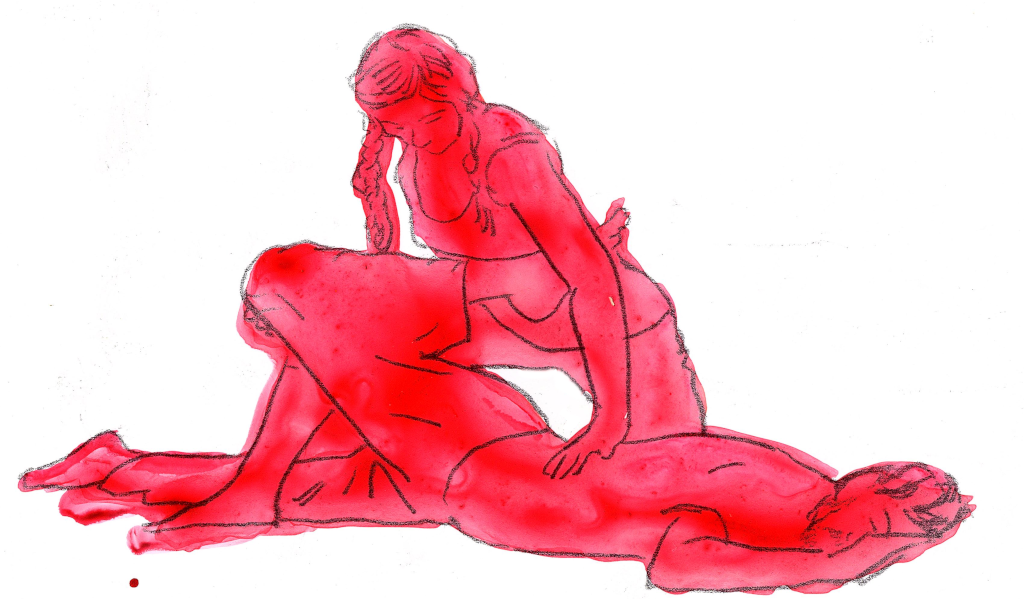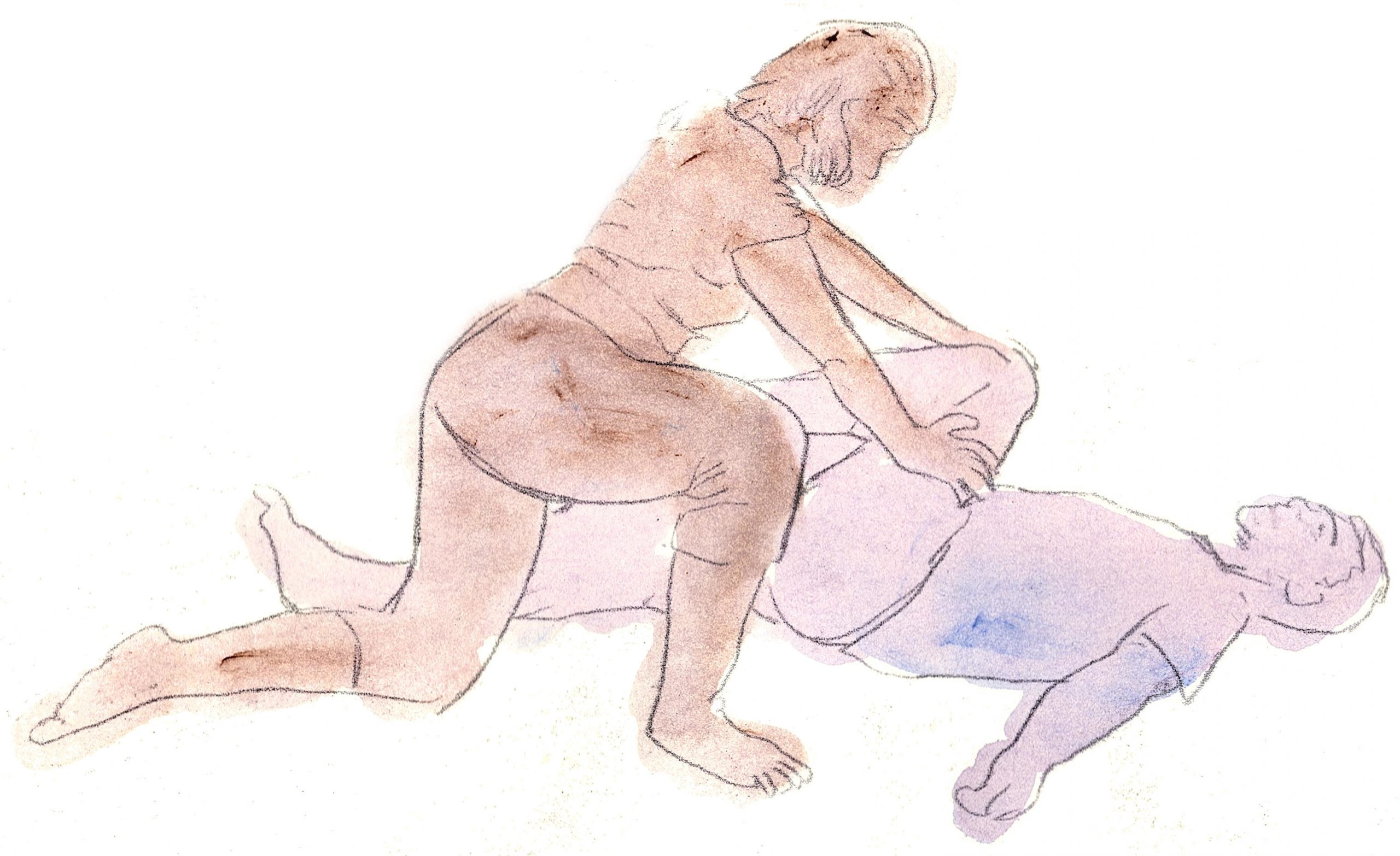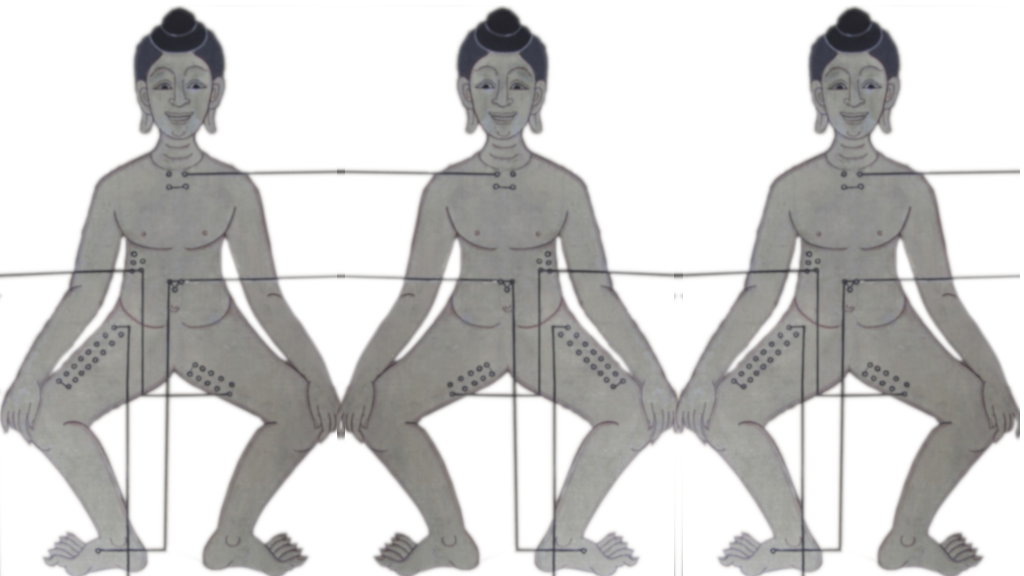Nothing happens until something moves.
―
Thai Yoga Massage (TYM) is an ancient healing art that deeply relaxes body and mind. This powerful holistic treatment uses acupressure and yoga stretches to work with the flow of energy around the body.
Acupressure works on the same principle as trigger point massage: by slowly applying pressure to specific points and along certain lines on the body we can release tension patterns and reduce pain that is caused by muscle ‘knots’ and stiffness. Receiving firm, carefully applied pressure encourages your body to let go and sink into the mat so that you can fully experience the treatment. The therapist will also gently stretch you into yoga poses that fit your body type, producing a feeling of well-being similar to that which is experienced during or after a yoga class. With that asanas supported by the therapist, you don’t need to use your own strength or balance so your muscles, ligaments, tendon and fascia may lengthen and open more easily. This also makes it easier to concentrate on exactly how the stretch feels and which other parts of the body are activated in support of the stretch or as a reaction to it.
No matter how much I move myself around, my strongest tendency is to move in the same ways that I have always moved, guided by the same deeply seated postural habits, sensory cues, and mental images of my body; but if I can succeed in surrendering to the movements that another person imposes on my body, without my own system of cues and responses interfering, it is possible to treat my mind to a flood of sensations that are novel in important ways, sensations that may well be able to indicate what things I have been doing that have produced my aches and pains at the same time as they have reinforced my normal sense of self.
Juhan Deane – Job’s Body: A Handbook for Bodywork
People often describe having new experiences of their body and therefore themselves during or after the treatment. A strong sense of connectedness with self and others, a feeling of comfort and at-oneness with the body, and increased energy and fluidity are all common outcomes for those receiving massage. With repeated treatments, these new sensations become integrated into daily life.

Practicalities
★ The massage is conducted on the floor, fully clothed ★ No oils or lotions are used ★
★ Wear somtething comfortable and unrestrictive to receive the treatment — yoga or other sports clothes are recommended ★
★ As long as you can get down to and up from the floor, there are no further physical requirements for fully enjoying a treatment ★ Traditional Thai practitioners often use very intense stretches and pressure to the point of pain, I have been taught a much gentler version which may often be quite intense, but it should be understood that is not a hard, endurance style of massage ★ It is not physiotherapy or sports massage — I do not treat injuries — but the deep relaxation that the treatment imbues may result in relief from pain, or give you a new experience of a chronically stiff or blocked area ★
★ Please see the list of contraindications ★

Origins of TYM
The name ‘Thai Yoga Massage’ was coined by western practitioners. I like to describe my treatments this way because it gives clients a fairly accurate idea of what to expect – plenty of stretching and opening the body and a feeling of having worked, but also being at rest afterwards. The term ‘Thai Massage’ is often associated with a very hard and very painful treatment and that’s not what I am trained to do.
The correct name is NUAD BO-RARN (Ancient Thai Massage) which according to ITM – International Training Massage School in Chang Mai, Thailand describes
a unique form of body therapy that incorporates Hatha Yoga and acupressure to stretch the muscles and open the joints. This safe holistic treatment harmonizes the body, increases energy, relieves stress and promotes a peaceful mind.
Northern and Southern Style
There are two main styles of Thai massage; the Southern (Bangkok) style of Thai massage focuses more on acupressure and a few Yoga like poses. The Northern style as taught at ITM places more emphasis on Yoga-like stretching positions/interaction and reflects the gentleness of the Northern people and the slower pace of Northern Thai life style. The Northern style is also called “Yoga for Lazy People”. Instead of doing Yoga, they do it for you.
The practices date back to around the time of the Buddha in the 2nd or 3rd century BC. The Thai Healing Alliance and The sunshine network in Thailand are good sources of information about TYM.
Harald Brust, who was very active in the rejuvenation and revival of Traditional Thai Massage in 90’s, has written an excellent summary which you can read here: History and origins of Traditional Thai Massage.

